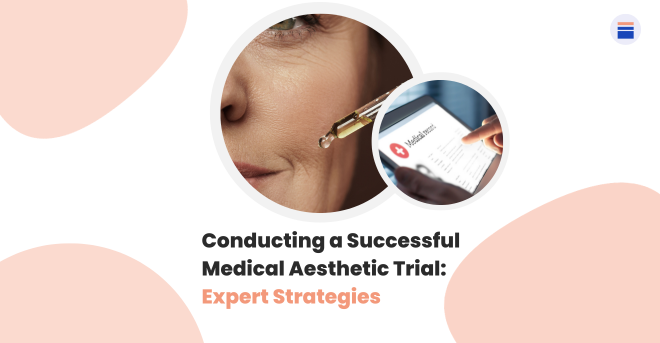
The medical aesthetic market presents itself as a dynamic frontier with immense possibilities. Site selection, patient enrollment optimization, proper collection of relevant data, and proper operationalization set up, all have a direct influence on the progress of a medical aesthetic trial. Thus, closely exploring these key components will maximize a trial’s success.
Site Selection and Patient Engagement

The site selections should be made in accordance with the following criteria:
- the availability and competency of clinical personnel
- potential burden on the sites
- patients user-friendly research equipment
- any country specific government regulations that might affect the trial.
Unlike dermatology patients, who generally seek treatment, the patients involved in medical aesthetics trials are usually in good health and looking for an aesthetic improvement. The study conduct should allow for as much flexibility as possible to accommodate participants’ work schedules and contribute to patient enrollment and continued engagement until study is completed. Close enrollment tracking and ensuring the sites’ capacity to handle large patient flow is also imperative to medial aesthetic trials that tend to attract a lot of interested patients.
Open Communication With Key Stakeholders

Effective communication between the sites, participants, CRO and sponsor is of paramount importance throughout all stages in trial execution. Well-established communication channels can fortify key partnerships. One of them is partnering with research sites that will maximize site engagement and contributions. This dialogue must start from the onset of site selection through to the completion of the study. The CRO should strive to keep the sites engaged and informed about study progress, important timelines and milestones expected to be met.
Prioritization of the Quality of Collected Data and Outcomes

The collection of data in a clinical trial is critical for providing valuable insight into the safety and efficacy of experimental therapies. To the same degree, special attention should be paid to the optimization of the technology used for the collection of this data, such as photography equipment, Patient-Reported Outcomes (PROs) devices, electronic data capture platforms, etc. These processes reduce complexity, lighten the site staff workload, and minimize time spent troubleshooting. Additionally, patients should be provided with instructions, from the site staff on completion of PROs. To ensure the accuracy of the patient’s responses, it is necessary that patient feedback is obtained before any other on-site procedure. Any distractions or conversations must be prevented to secure the highest quality of PRO data.
Novel Treatments Generate Interest

Site investigators may show greater enthusiasm when approached for a medical aesthetic trial in general, and especially when such trials are evaluating a novel product or novel mechanism of action. This level of enthusiasm often translates to larger volume of patients being enrolled in the trial.
Medical aesthetic trials are intricate and require extensive preparation in their execution. It is essential to select the best-suited sites and to implement a protocol designed to provide significant scientific and medical value while enabling patient recruitment and minimizing the burden on site staff. Thoughtful planning and collaboration from all parties are key contributors to the success of a medical aesthetic clinical trial.
At Indero, we believe that medical aesthetic trials should be conducted with the utmost care. Our team of experts specializes in the design, organization, and implementation of studies and ensures that every detail is meticulously considered. Contact us to learn more about how we can help you achieve your clinical trials ambitions.



